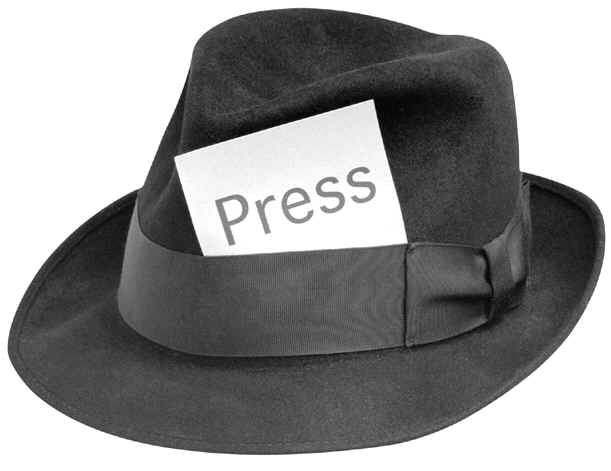Many times on this blog and in my book I have stressed the need for personal vigilance. Quite simply, pay attention to what is happening around you. Just because you think that a text is important does not mean the universe will rearrange itself to keep you safe! I know I may sound like a broken record here but the importance of awareness cannot be over stressed.
A friend of mine sent me the following link:-
The tone of the article suggests that these are acts of violence committed just of the pleasure of seeing someone fall. I’ve had personal experience of attacks motivated by this. It is a useful reminder that predation is not always driven by greed or lust. Anyone can be targeted for violence. Awareness and some of the other factors that I discuss in my book can reduce your chances of being selected as a victim.
To be honest, I am rather surprised that we do not hear about more “sucker” attacks. So many people walk down the street with their eyes glued to their phones or music players, only marginally aware of their surroundings. A colleague of mine had her phone stolen. According to her a man simply walked over to her, slapped her and took it. As she is telling me this story I was acutely aware that there was some fact that she was omitting. Sure enough, it turns out she was using the phone at the time. Doubtless one of those long, drawn-out conversations with her son about precisely how to put a piece of fish in a microwave. Had the misfortune to overhear many of those while I was working with her and know well how oblivious she would have been.
Your primary defence against a sucker punch is awareness. How close will you let another human being get to you, particularly if you do not know them, they seem drunk or furtive or there are few other people around? There are too many aspects of awareness to cover in today’s blog. Instead, I will briefly cover a couple of defences against a head punch. In other words you have become aware of a potential attacker but he has still got close enough to make his move. My book is filled with techniques you can use but today I will mainly look at Peyton Quinn’s outside and inside crane defence.
Peyton Quinn wrote “A Bouncer’s Guide to Barroom Brawling”, one of the books I recommend for further reading in my own book. Quinn very kindly gave me permission to detail a couple of his techniques in my own work. Quinn observes that the head punch is a very common move in real fights so has honed a couple of techniques to deal with such an eventuality. (Injuries to the hand from head punching are also common!)
The outside crane is best used if you can move to the outside gate. It is a fairly standard parrying move. Notice how the arm rolls the blow, leaving the hand in contact to detect and influence what the foe’s arm may do next. In the illustration a right to the head is intercepted with the right hand and as the punch is moved right the defender moves left, taking themselves out of the path of the punch.
The inside crane is shown here against a hooking type punch. Both arms come up and body twist can be used to roll the attack past. This technique offers a large surface area against impacts so is a good defence against kicks to the head, should the foe be foolish enough to use them on the street. (Chances are he will rip a muscle without a warm-up and stretching!)
The inside crane leaves you on the foe’s inside gate so he will probably follow through with a punch from his other hand. The next illustration shows a follow on from inside crane, in this case a source block against a punch with the left. White would be moving to his left. Notice that the position of the arm also helps deflect the punch away from the head. This leads us to a third technique.
Western boxing uses a lot of punches to the head region so it is no surprise that simple and efficient counters to such attacks have been developed. The one we are going to cover is to simply place your hand on your head above the ear. The bent arm creates a large area to act as a shield. You will find that making this move on one side tends to make you duck to the other side, taking you out of harm’s way. This ducking action is also a good setup for a palm heel chin jab!
If you have enjoyed this article or it has been helpful to you please feel free to show your appreciation. Thank you.
The Books
A friend of mine sent me the following link:-
The tone of the article suggests that these are acts of violence committed just of the pleasure of seeing someone fall. I’ve had personal experience of attacks motivated by this. It is a useful reminder that predation is not always driven by greed or lust. Anyone can be targeted for violence. Awareness and some of the other factors that I discuss in my book can reduce your chances of being selected as a victim.
To be honest, I am rather surprised that we do not hear about more “sucker” attacks. So many people walk down the street with their eyes glued to their phones or music players, only marginally aware of their surroundings. A colleague of mine had her phone stolen. According to her a man simply walked over to her, slapped her and took it. As she is telling me this story I was acutely aware that there was some fact that she was omitting. Sure enough, it turns out she was using the phone at the time. Doubtless one of those long, drawn-out conversations with her son about precisely how to put a piece of fish in a microwave. Had the misfortune to overhear many of those while I was working with her and know well how oblivious she would have been.
Your primary defence against a sucker punch is awareness. How close will you let another human being get to you, particularly if you do not know them, they seem drunk or furtive or there are few other people around? There are too many aspects of awareness to cover in today’s blog. Instead, I will briefly cover a couple of defences against a head punch. In other words you have become aware of a potential attacker but he has still got close enough to make his move. My book is filled with techniques you can use but today I will mainly look at Peyton Quinn’s outside and inside crane defence.
Peyton Quinn wrote “A Bouncer’s Guide to Barroom Brawling”, one of the books I recommend for further reading in my own book. Quinn very kindly gave me permission to detail a couple of his techniques in my own work. Quinn observes that the head punch is a very common move in real fights so has honed a couple of techniques to deal with such an eventuality. (Injuries to the hand from head punching are also common!)
The outside crane is best used if you can move to the outside gate. It is a fairly standard parrying move. Notice how the arm rolls the blow, leaving the hand in contact to detect and influence what the foe’s arm may do next. In the illustration a right to the head is intercepted with the right hand and as the punch is moved right the defender moves left, taking themselves out of the path of the punch.
The inside crane is shown here against a hooking type punch. Both arms come up and body twist can be used to roll the attack past. This technique offers a large surface area against impacts so is a good defence against kicks to the head, should the foe be foolish enough to use them on the street. (Chances are he will rip a muscle without a warm-up and stretching!)
The inside crane leaves you on the foe’s inside gate so he will probably follow through with a punch from his other hand. The next illustration shows a follow on from inside crane, in this case a source block against a punch with the left. White would be moving to his left. Notice that the position of the arm also helps deflect the punch away from the head. This leads us to a third technique.
Western boxing uses a lot of punches to the head region so it is no surprise that simple and efficient counters to such attacks have been developed. The one we are going to cover is to simply place your hand on your head above the ear. The bent arm creates a large area to act as a shield. You will find that making this move on one side tends to make you duck to the other side, taking you out of harm’s way. This ducking action is also a good setup for a palm heel chin jab!
If you have enjoyed this article or it has been helpful to you please feel free to show your appreciation. Thank you.
The Books


















